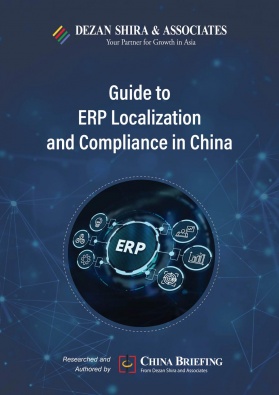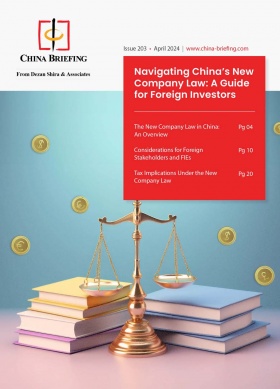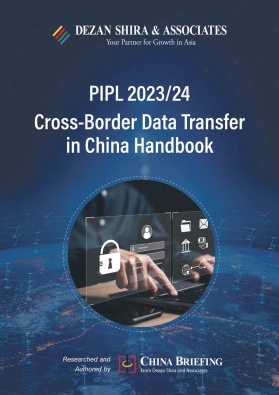Key Considerations for Entering China’s Healthcare Market
Entering China’s healthcare market presents an alluring opportunity for global investors, but it is highly regulated and fiercely competitive. To achieve success, businesses must skillfully navigate the evolving regulatory and compliance landscape, strategically plan their approach, and remain proactive and adaptable to maintain their competitive advantage and respond effectively to market trends.
China’s healthcare market is continuously growing and dynamic, making it one of the most attractive in the world. However, the market is heavily regulated, with high compliance requirements and strong competition.
For foreign investors to successfully enter this market, it is crucial to understand the relevant industry policies and compliance requirements and develop a well-tailored strategy.
In this article, we outline some key considerations for entering China’s healthcare market and summarize critical success factors.
Is China’s healthcare sector open to foreign investment?
When investing in China’s healthcare market, one of the first considerations should be whether the specific sector they want to enter allows foreign investment.
Despite China’s continuous liberalization of its healthcare industry to allow foreign participation by removing items from the Special Administrative Measures (Negative List) for Foreign Investment Access (hereafter referred to as the “FI Negative List”) and adding items to the Catalogue of Encouraged Industries for Foreign Investment (hereafter referred to as the “FI Encouraged Catalogue”), there are still certain sectors that remain off-limits or restricted to foreign investment.
Medical institutions
Foreign investment in medical institutions is restricted to joint venture structures and cooperation with Chinese companies, unless where special approval has been granted. An exemption exists for Hong Kong entities and eligible Hong Kong Service Suppliers, who are eligible to establish wholly foreign-owned medical institutions if they meet the requisite conditions under the Mainland and Hong Kong Closer Economic Partnership Arrangement (CEPA). Additionally, in 2014, wholly foreign-owned hospitals were once allowed in seven cities including Beijing, Tianjin, Shanghai, Jiangsu, Fujian, Guangdong, and Hainan on a pilot basis.
Sino-foreign joint venture hospitals must comply with the Interim Measures on the Administration of Sino-Foreign Joint Venture and Cooperative Medical Institutions, which stipulate that foreign investors’ shareholding ratio or equity in the joint venture shall not exceed 70 percent. The total investment must be at least RMB 20 million (Approx. US$2.9 million), and the joint venture’s operation term cannot exceed 20 years.
In practice, some foreign investors have managed to break through these restrictions on foreign ownership ratio or even gain complete control over domestic medical institutions through historical investment, domestic reinvestment, VIE arrangement, or custody agreement. However, they may face obstacles when changing or renewing their operational qualifications, such as the Practicing License of Medical Institutions. Furthermore, in the case of subsequent shareholding changes, regulatory authorities may review the actual foreign shareholding ratio based on the “look-through approach” (穿透式审查, meaning tracing to the ultimate shareholder by looking through the multiple layers of shareholding structure based on the current effective law at that time), which may require foreign investors to reduce their ownership. Therefore, foreign investors should exercise caution when planning their investment structure.
Human stem cells and genetic technology
Another healthcare sector that is restricted to foreign investment is human stem cell and genetic technology. According to the latest FI Negative List, foreign investors are currently not allowed to directly invest in the development and application of human stem cells and gene diagnosis and treatment technologies.
However, foreign investors are encouraged to invest in the manufacturing of high-throughput gene sequencing systems, according to the latest FI Encouraged Catalogue. Foreign investors are also generally not restricted from engaging in the import and export, production, sales, and research and development of genetic testing equipment.
On the other hand, in accordance with the Regulations of the People’s Republic of China on the Administration of Human Genetic Resources, foreign investors can cooperate with domestic institutions in scientific research related to stem cell and/or genetic diagnosis and treatment, provided that certain requirements are met, and regulatory approvals are obtained. They can also grant licenses to domestic institutions for the technological development and sale of genetic diagnostics and/or stem cell products owned by them.
Although there are established pathways for foreign investment in the sector, foreign investors may still encounter challenges. For instance, it can be challenging to clearly distinguish between the development of genetic testing equipment and the research and development of genetic testing technology in practice. Consequently, some activities of genetic testing equipment research and development enterprises may be classified as the application of genetic diagnosis and treatment technology, thereby prohibiting foreign investment. To avoid such complications, foreign investors are advised to communicate with relevant authorities in advance.
Traditional Chinese medicine
Foreign investors are prohibited to invest in the application of steaming, frying, moxibustion, calcination, and other processing techniques of traditional Chinese medicine (TCM) decoction pieces, as well as the production of confidential prescription products of proprietary Chinese medicines. However, such restrictions do not exist in China’s 21 free trade zones.
Beyond these three sectors – medical institutions, human stem cell and genetic diagnosis and treatment technology, and TCM – other healthcare sectors are mostly open to foreign investment in China.
In fact, foreign investment is actively encouraged in many healthcare areas, such as the manufacturing of new compound drugs or drugs with active ingredients, researching and developing (R&D) and manufacturing of cell therapy drugs (excluding areas where foreign investment is prohibited), manufacturing of dental implant systems for implant repair in patients with bone loss, postpartum maternal and child services in maternity centers, and rehabilitation institutes for autistic children, to name a few. Foreign investors with expertise and a strong presence in a particular area should confirm whether their business falls within these encouraged sectors to benefit from corresponding investment facilitations and receive preferential land and tax incentives.
Approval and licensing
The healthcare sector has always been subject to stringent regulations as the quality of medical services and healthcare products directly impact the safety and well-being of individuals. Recent efforts have been made to simplify and streamline administrative procedures in the healthcare industry, as part of medical reforms aimed at encouraging social capital, including foreign investment, to participate in providing diversified healthcare services. However, relevant market players still need to obtain various qualifications and fulfill registration and approval procedures to demonstrate their technical capabilities and ensure compliance with regulations.
Pharmaceutical approval and licensing
In the pharmaceutical area, depending on their specific business scope and business type, different certifications and qualifications are required:
- For businesses engaging in pharmaceutical R&D, they will need to obtain a Good Laboratory Practices for Nonclinical Drug Research (GLP) certificate issued by the National Medical Products Administration (NMPA) for doing preclinical trial; a record-filing with local health bureau for the use of pathogenic microbiology and an approval from local department of science and technology for use of experimental animals in laboratories; a Radiation Safety Permit from local environmental protection bureau if the drug R&D process involving radiative materials; and import-export related licensing and approvals if the drug R&D involves in imported raw materials.
- For businesses engaging in pharmaceutical manufacturing, they will need to apply for a Drug Manufacturing License from provincial NMPA and then comply with the Good Manufacturing Practices (GMP) standards. They also need to obtain a Work Safety License for the production activities, and relevant import-export licenses if needed.
- For businesses engaging in drug supplying and trading, they will need to apply for a Drug Trading License and comply with the pharmaceutical Good Supply Practice (GSP) standards.
Medical devices approval and licensing
Medical devices in China are subject to classified management: medical devices are divided into three classes based on the level of risk they present to patients or users. Class I is the lowest risk class and is subject to record-filing management, which is comparatively easier, and Class II and Class III are the higher risk classes and are subject to product registration management, which involves a longer and more rigorous process.
Upon registration, the business will obtain a Medical Device Registration Certificate for relevant Class II and Class III medical devices. Also, businesses will need to file a record with local NMPAs for trading Class II medical devices while they need to obtain an approval for trading Class III medical devices.
Approval and licensing of medical institutions
As for setting up medical institutions, foreign investors will need to obtain an Approval for the Establishment of Medical Institutions and a Practicing License of Medical Institutions from local health authorities.
Medical institutions will additionally need to obtain multiple licenses based on their business scope, such as the license for radiological diagnosis and treatment, license for maternal and infant health technical service institutions, license for occupational health examination and diagnosis institutions, and license for purchase and use of narcotic drugs and category I psychotropic drugs.
However, under the “many-in-one” reform, most of these post-establishment licenses, except the Large Medical Equipment Configuration License, have been integrated into the Practicing License of Medical Institutions. That is to say, upon getting approval for relevant applications, the authority in charge will affix relevant information on the Practicing License of Medical Institutions, rather than issuing separate licenses.
Foreign investors engaging in relevant sectors are suggested to have a thorough understanding of the qualification, certificates, and approval requirements in advance and consult with experience local agencies for estimating the time and cost.
Two-invoice system
The “two-invoice system” means that during the distribution process from drug manufacturer to hospital, only two value-added tax invoices (or fapiao) may be issued. The manufacturer issues a first invoice to the distributor, while the distributor issues a second invoice to the hospital or medical service provider. Unlike the previous system where drug distribution chains were typically comprised of manufacturers and multiple levels of distributors, the two-invoice system allows only one level of commissioned distributor in the procurement chain.
First piloted in selected provinces in 2016, this program was expanded nationwide in 2017 and 2018 for drug distribution. The two-invoice system has also been expanded to cover certain categories of medical devices since 2018, such as the “high-value medical consumables”.
The “two invoices system” is designed to streamline pharmaceutical distribution channels, reduce the cost of pharmaceuticals, and prevent corruption. But in practice, the system has changed the way manufacturers (importers), distributors, sales, and compliance teams in the pharma industry work from both business and tax perspectives.
To ensure compliance and enhance competitiveness in this evolving system, relevant businesses must transition from a hierarchical to a flat structure in the distribution channels of pharmaceutical products and integrate the supply chain. This not only challenges enterprises to effectively collaborate and manage upstream and downstream business partners but also increases the complexity of internal operational management. In light of this, enterprises are advised to seek professional assistance in advance and implement appropriate supply chain management systems and tools.
Further, under the two-invoice system, pharmaceutical distributors will face higher financial pressure as they have to deal with the long payback period of hospital and medical institutions alone, rather than sharing with other distributors. Companies are advised to make plans for cash flow management as early as possible.
In addition, pharmaceutical companies must be mindful of their pricing strategies, as the difference in pricing between the hospital purchase price and the manufacturer’s (or importer’s) ex-factory price not only affects the manufacturer’s (or importer’s) margins but also impacts their VAT payable.
Medical advertising
Medical advertisements have become increasingly important in boosting the sales of related medical products in China, given the highly competitive market and rapid growth of the platform economy. However, due to the close connection between medical products and services and consumer health, medical advertising is subject to higher compliance requirements and scrutiny compared to general advertising.
In April 2021, market supervision administrations across the country launched special campaigns to target illegal advertising practices in medical treatment, drugs, health food, and medical beauty, including unauthorized medical advertising, exaggerated claims, and false advertisements.
Furthermore, China has revised several laws and regulations related to medical advertising, such as the Advertisement Law and the Regulations on the Supervision and Administration of Medical Devices, which have established stricter compliance standards, increased penalties for non-compliance, and thereby increased the costs of non-compliance for relevant enterprises.
As crackdowns on illegal medical advertising are likely to persist in the near future, it is important for investors to consider medical advertising regulations when developing their overall compliance system. This may include implementing qualified professional services, providing proper training, establishing a well-developed internal control system, and conducting regular compliance audits to avoid potential penalties and reputational harm to the business.
Crackdown on corruption in the healthcare sector
Businesses operating in the healthcare industry should also pay attention to anti-corruption management, as China sees corruption in the medical fields as the one of the main factors that undermine the reliability and efficiency of the country’s medical system. The government has taken a strong stance against anti-competitive behaviors and corruption in the medical field, leading to increased scrutiny and low tolerance for such actions.
In August 2020, the Central Supervision Commission (CSC) issued a notice emphasizing the importance of strict anti-corruption investigations in the medical field. In October of the same year, the CSC issued another statement calling for the investigation of power-money transactions, the establishment of a list of dishonest individuals, and the cutting off of the benefit chain of medical bribery.
Companies in the healthcare sector are thus at a higher risk of being implicated in commercial bribery and subject to administrative or even criminal penalties. Therefore, it is crucial for relevant enterprises to include anti-corruption measures as an essential part of their overall compliance system. They should also continuously monitor the authenticity, rationality, and verifiability of their employees’ behavior in subsequent marketing processes.
Key takeaways
China’s healthcare sector is highly regulated and competitive and is among the most promising markets in the global healthcare sector. To succeed in this market, foreign investors must be proactive and agile, planning strategically, acting quickly, and working diligently.
In addition to the considerations mentioned above, foreign investors should stay abreast of the latest policies, not only those related to the administration and compliance of the healthcare sector, but also those outlining the government’s industry priorities. They should adjust their strategy and operations accordingly.
Furthermore, innovation is a key advantage of foreign investors, especially those with expertise in a particular area, but smaller in size. It is wise to capitalize on their creativity by customizing their products to meet the needs of the Chinese market and addressing existing challenges. They should also develop a comprehensive intellectual property strategy early on to maintain their competitive edge.
Finally, foreign investors who are unfamiliar with the Chinese market are advised to partner with local companies and hire professional agencies to facilitate market entry and compliance management. However, they should conduct due diligence to verify the reliability and qualifications of potential local partners and professional agencies.
About Us
China Briefing is one of five regional Asia Briefing publications, supported by Dezan Shira & Associates. For a complimentary subscription to China Briefing’s content products, please click here.
Dezan Shira & Associates assists foreign investors into China and has done so since 1992 through offices in Beijing, Tianjin, Dalian, Qingdao, Shanghai, Hangzhou, Ningbo, Suzhou, Guangzhou, Dongguan, Haikou, Zhongshan, Shenzhen, and Hong Kong. We also have offices in Vietnam, Indonesia, Singapore, United States, Germany, Italy, India, and Dubai (UAE) and partner firms assisting foreign investors in The Philippines, Malaysia, Thailand, Bangladesh, and Australia. For assistance in China, please contact the firm at china@dezshira.com or visit our website at www.dezshira.com.
- Previous Article Asia Transfer Pricing Brief: Q1 2024
- Next Article Shenzhen’s Qianhai Cooperation Zone Expands Preferential IIT and CIT Policies








